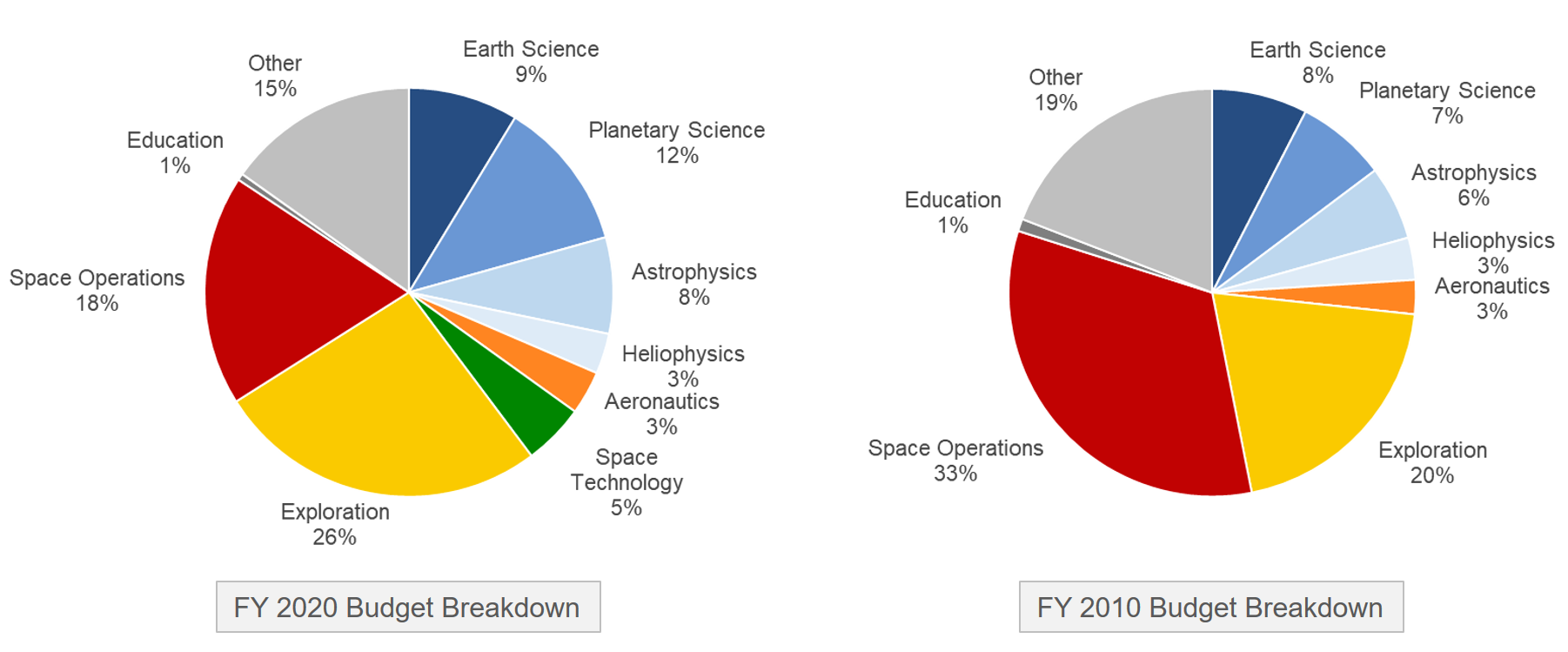_______________________________________________________________
Babies feel more at ease when they can put things in their mouth; financial analysts like me feel more at ease when we can put things in Excel! One of my favorite things about being a paid member of the Planetary Society (besides contributing to the world's #1 space advocacy nonprofit!) is that because they're so involved lobbying Congress in support of NASA funding, they release some pretty detailed analysis of NASA's budget that I enjoy picking apart. A few months ago, one of their top space policy advisors, Casey Dreier, published an incredibly rich dataset laying out the year-over-year cost of every major planetary mission since NASA's establishment. And rather than making you all sift through all the Excel data, I've taken the liberty of crunching out some insightful charts for your viewing pleasure!
Note: all source data comes from the Planetary Society's dataset. Figures shown are inflation-adjusted dollars
First off, take a look at NASA cumulative spending over the last 6 decades to various destinations across the solar system:
- Unsurprisingly, the moon got the lion's share of funding in the 1960s in preparation for the Apollo Program, but then it promptly flatlined as the moon landings ended. From 1970 to 2000, NASA allocated almost nothing towards the exploration of our nearest cosmic companion (I was blown away by this!)
- Mars has understandably received the greatest and most consistent funding through the years, starting with the Mariner flybys and Viking landers and continuing with the multi-billion dollar Perseverance rover set to launch this month
- The Outer Planets also appear to have gotten consistent funding, but in reality all that attention is concentrated on Jupiter and Saturn, both of which have been visited by multiple probes, whereas lonely Uranus and Neptune have only ever been visited by one spacecraft (Voyager 2)
- Venus, I feel we have criminally neglected. Earth's sister planet hasn't received a dedicated mission since Magellan in 1989, and while there are some future proposals in the works, it'll be a while before we return. I think we should - Venus' runaway greenhouse effect carries a dire warning to us on Earth that we should study and learn from
Here I've arranged the data to show the top 20 most expensive NASA planetary science missions to date (inclusive of estimated future costs):
- I'm not surprised at all to see Europa Clipper take the cake as most expensive - the planned Jovian moon orbiter is currently undergoing cost reviews on various scientific instruments that have gone over budget. Not to mention it's slated to launch on the Space Launch System, NASA's painfully delayed and exorbitant megarocket. But the mission will happen sooner or later, and Europa is an absolutely fascinating world, so I think it'll be worth it in the end
- In general, costs depend on mission type: rover > lander > orbiter > flyby, since more complex missions require more fuel for precise orbital maneuvers
- I'm really excited for Psyche - SpaceX won the contract to launch the mission to the metallic asteroid on a Falcon Heavy for the dirt-cheap price of $117M. This is SpaceX's first NASA planetary mission; the ULA has been launching NASA's payloads for decades with a flawless record
- I'm astounded by how cheap Voyager was. Even though they were just flybys, two iconic spacecraft for just $650M dollars is a pretty sweet deal to me
Alright, I'm actually pretty proud of this next chart - ain't it a beauty?! As you might expect, NASA's funding is compartmentalized by its various activities, and planetary science is just one of those departments. We see during the 1960s that planetary science took a backseat to manned lunar exploration but has seen strong growth in the decades since, both on an absolute basis and relative to the total NASA budget. The red/blue shading by political party just goes to show that in spite of the numerous transitions in recent American politics, NASA continues to receive solid bipartisan support
Finally, I found it worthwhile to analyze the allocation of NASA budget over the last decade:
- Just like what the last chart showed, planetary science has become more of a priority for NASA in recent years, receiving more than 10% of the budget for the first time ever in 2020
- Space technology is a new and extremely exciting category: with the growth of private space corporations, NASA has set aside funding dedicated to early stage innovation and partnerships, as well basic research into next-generation technologies like solar electric propulsion and nuclear thermal propulsion
- In the last decade, NASA has reduced funding towards space operations (existing infrastructure like the Space Shuttle and the ISS) and increased funding towards deep space exploration as part of the Artemis Program. I find this both extremely exciting and long overdue







No comments